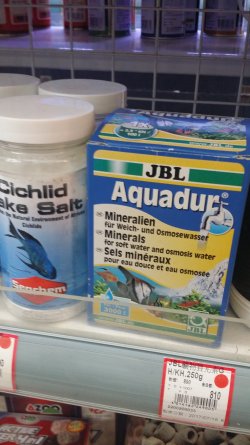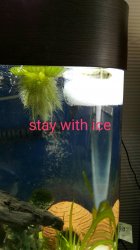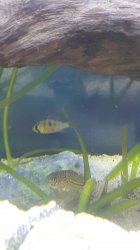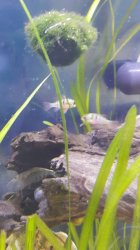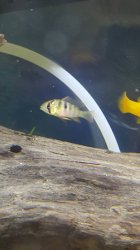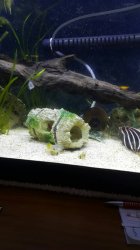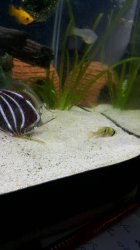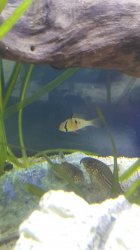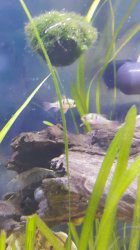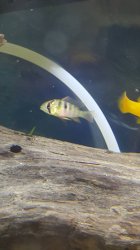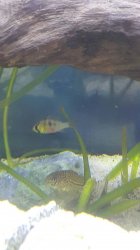The removal of the one ram is not likely related to the problem issue. Flashing so rapidly can be caused by several things, but here I would suspect it is ich. Ich first attacks fish in the gills where we can't see the spots. In a couple days they will begin to appear. Stress is the cause, which is why we frequently see ich with new fish. Sometimes they may flash a bit but manage to shake it off, so to speak, depending upon the strength of the fish and stress level. I'll come back to the treatment.
How did you correct the water hardness? And what was it before and after this? This can cause severe stress, and as stress is the direct cause of 95% of fish disease (including an outbreak of ich) this may be part of the initial issue. I can offer more when I have the data. Livebearers require moderately hard or harder water, and the rams are soft water, so I don't understand having to adjust it. This may well have triggered the problem. Was the flashing present when the rams died? The former "balloon" ram had some issue which may also be related, or not.
To the presumed ich, which is common with newly-acquired fish. Sometimes just getting the water "clean" (free of all additives except conditioner) can solve this as the fish can build up a resistance. If not, then raising the temperature of the tank water to 86F (30C) and using aquarium salt is just about the best treatment. Most fish can handle this. Livebearers certainly can, and the rams should be OK for a week. Do a major partial water change, raising the temp with the replacement water by a few degrees, and adjust the heater to achieve the rest. Then add aquarium salt over a period of several hours, a bit at a time. You want 2 grams of salt per liter of tank water (remember to calculate for displacement by substrate and decor when calculating the volume--I sometimes lower the water level depending upon how the filter works and the tank size, so I have less volume to treat, but it doesn't matter. One level teaspoon of aquarium salt is approximately 6 grams, sufficient for 3 liters. Do not overdose. Make sure the salt is completely dissolved (I do this in a covered jar by shaking it well, then pouring in the salted water) as salt can burn fish. Aquarium salt can be purchased at most fish stores. Do not use marine salt as this contains other minerals which will only further stress the fish, nor table salt (though absolutely pure sea salt with no additives can be used).
Maintain the heat for one full week. I sometimes do a second week to be certain. I gauge this by the actions of the fish. It takes several days for the ich life cycle to complete and you want to do a thorough job of eradicating most of it. The increased heat speeds this up. If you do go a second week, do a partial water change at the end of the first week, as you normally would weekly, and add sufficient salt as before but only for the volume of replacement water. Salt remains in the tank and will eventually be removed via normal partial water changes.
You might have luck with just heat, raised up to 90F (33 C) as livebearers and rams should be OK with this, without salt. Many advocate this high a temperature will kill the ich. I've always had some fish species in the tank that could not easily tolerate this, so I have used the salt/heat method when ich is bad. It also works for velvet, and probably other parasites. Monitor the fish behaviour closely, and if signs of stress (very rapid respiration, though this is difficult as the ich will cause this to begin with; remaining at the surface; gasping; lethargy; not eating or showing any interest) suddenly appear, do a partial water change to reduce the salt.
I am not there to see the condition of the fish and assess the flashing, and there is no point in treatment without good reason, as this can make things even worse.








